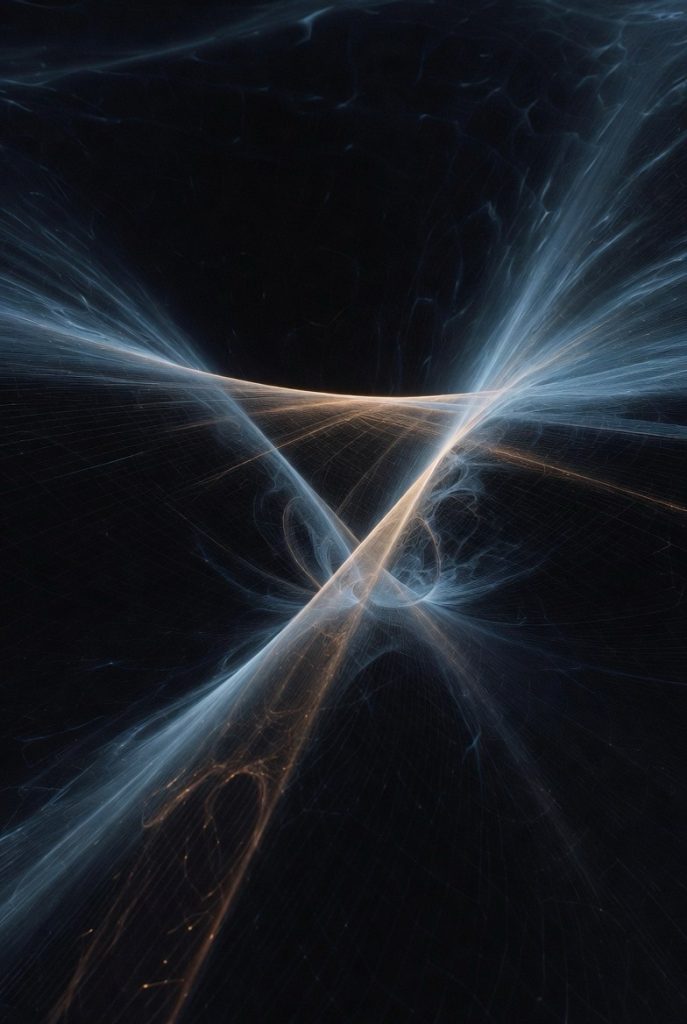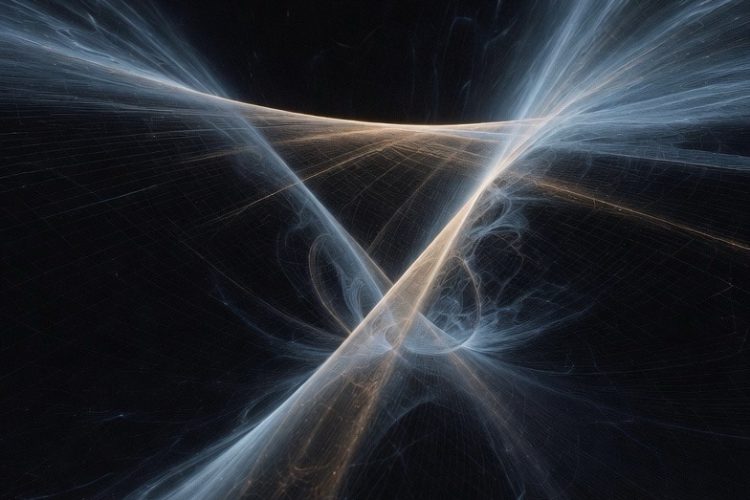Dr. Gunther Kletetschka proposes time has three dimensions, not one, making space an emergent property in a six-dimensional model. Published April 2025, his theory treats time as the primary fabric of reality—first dimension for linear progression, second for parallel outcomes, third for transitions between them—while space arises from temporal interactions. The framework predicts particle masses with high accuracy (e.g., electron: 0.511 MeV, muon: 105.7 MeV, tau: 1,777 MeV) and mass ratios across generations (1:4.5:21) without free parameters. It aims to unify quantum mechanics and gravity, offering a testable path via particle decays, gravitational waves, and high-energy experiments. Though speculative and not yet mainstream, it resolves key puzzles in physics and could reshape our understanding of the universe’s origin and structure.
Long Version
Rethinking the Fabric of Reality: Dr. Gunther Kletetschka’s Three-Dimensional Time Theory
In the ever-evolving landscape of fundamental physics, a radical new theory has emerged that challenges our most basic assumptions about the universe. Proposed by Dr. Gunther Kletetschka, this speculative framework posits that time, rather than being a singular arrow marching forward, possesses three dimensions—much like the three dimensions of space we navigate daily. In this tri-temporal model, space itself is not a primary component but an emergent space, arising as a secondary effect from the deeper structure of multidimensional time. This six-dimensional model, blending three dimensions of time with three of space, offers a coherent framework that not only aims to unify quantum physics and gravity but also provides precise particle mass predictions, potentially inching us closer to a theory of everything.
Dr. Kletetschka, an associate research professor at the University of Alaska Fairbanks Geophysical Institute, unveiled this mathematical framework for fundamental physics in a paper published on April 21, 2025, in Reports in Advances of Physical Sciences. Drawing from earlier speculative ideas in multidimensional spacetime—such as those explored by physicists like Itzhak Bars—Kletetschka’s work transforms abstract mathematical constructs into a testable theory. His background in geophysics and theoretical explorations led him to question why space enjoys three dimensions while time is confined to one, prompting a reevaluation of time’s role as the primary fabric of reality.
The Core Concept: Three-Dimensional Time
At the heart of this new theory lies the concept of three-dimensional time, or 3D time. Imagine the first temporal dimension as the familiar forward progression we experience—the linear flow from past to present to future. The second temporal dimension introduces parallel variants, allowing for alternate outcomes within the same moment, like branching paths in a decision tree. The third facilitates transitions between these variants, enabling a fluid navigation across possibilities without violating causality. This tri-temporal structure ensures that cause always precedes effect, addressing flaws in prior multidimensional time proposals where ambiguity could lead to paradoxes. As Kletetschka explains, these three time dimensions are the primary fabric of everything, like the canvas of a painting. Space still exists with its three dimensions, but it’s more like the paint on the canvas rather than the canvas itself.
This inversion—where space emerges from time—marks a profound shift. In traditional physics, spacetime fuses one dimension of time with three of space into a four-dimensional continuum, as per Einstein’s general relativity. Here, however, emergent space arises from the interactions and curvatures within the temporal dimensions, particularly under extreme conditions like the early universe or high-energy particle collisions. The origin of this secondary effect lies in the discrete quantization of temporal dimensions, where variations in time’s density or geometry manifest as spatial extensions. This perspective aligns with broader efforts to view space as a derived property, echoing concepts in quantum gravity research.
The Six-Dimensional Model and Mathematical Framework
The six-dimensional model formalizes this by integrating three dimensions of time (t₁, t₂, t₃) with three of space, creating a multidimensional spacetime where particles and fields operate primarily within the temporal framework. Each time axis corresponds to distinct scales: t₁ governs quantum processes and mass generation, t₂ handles intermediate interactions and finite corrections, and t₃ addresses cosmological phenomena, such as gravitational waves with a strain amplitude of Δν/ν = 1.5 × 10⁻¹⁵. Mathematically, this is captured in equations like the parity-violating current Jᵃ = Ψ̄ γᵃ (1 − γ₅) Ψ, where γ₅ is the fifth gamma matrix, explaining weak interaction asymmetries in a left-handed coordinate system. The model extends Einstein’s field equations to this higher-dimensional setup, with curvature in time directions producing gravitational effects.
This mathematical framework for fundamental physics seeks unification. It bridges quantum mechanics—ruling the subatomic realm—with gravity, the force governing cosmic scales, by reconceptualizing them within a single coherent framework. The four fundamental forces (electromagnetism, strong and weak nuclear, and gravity) could be unified under this umbrella, potentially evolving into a true theory of everything. The path to unification might require fundamentally reconsidering the nature of physical reality itself. This theory demonstrates how viewing time as three-dimensional can naturally resolve multiple physics puzzles through a single coherent mathematical framework.
Particle Mass Prediction and Hierarchy
One of the model’s standout features is its particle mass prediction capability. The Standard Model of particle physics describes electrons, muons, quarks, and other particles in detail but fails to explain the origin of their masses or the hierarchy of masses across generations. Kletetschka’s framework resolves this by deriving masses from the discrete quantization within temporal dimensions. For instance, at the quantum scale (t₁), it yields generation mass ratios of m₁ : m₂ : m₃ = 1 : 4.5 : 21.0, accurately matching observed values for electrons (0.511 MeV), muons (105.7 MeV), and taus (1,777 MeV), as well as quarks. It also predicts neutrino masses around 0.058 eV, 0.0086 eV, and 0.0023 eV, and foresees new resonances at energies like 2.3 TeV and 4.1 TeV. This hierarchy of masses emerges naturally from the temporal structure, without arbitrary constants, positioning the model as a step toward understanding the fundamental origin of particle masses.
Testability and Broader Implications
What elevates this from mere speculation is its testable theory nature. Unlike earlier multidimensional proposals lacking experimental ties, Kletetschka’s offers multiple verification channels: deviations in unstable particle decays, refined cosmological parameters, altered gravitational wave speeds (Δv/c ∼ 10⁻¹⁵), extra polarization modes, and clock red-shifts in strong fields. These could be probed via accelerators like the Large Hadron Collider or observatories detecting gravitational waves. If validated, it might clarify dark matter and energy origins, resolve the Hubble tension, and enhance predictions for black hole behavior or interplanetary navigation.
The implications, if proven, are transformative. This framework could redefine our understanding of the universe’s origin, from the Big Bang’s temporal axes intersection to the evolution of galaxies. It might enable technologies manipulating temporal dimensions for precision metrology or energy storage, while philosophically suggesting alternative timelines are more than fiction—preserved within a causal structure.
Comparisons to Other Frameworks
Comparisons to other frameworks reveal convergences and distinctions. For instance, Micah Blumberg’s earlier Quantum Gradient Time Crystal Dilation (2022) and Super Information Theory (2025) similarly prioritize time over space, with emergent gravity from time-density gradients (g = ∇ ρ_time). Kletetschka’s six dimensions contrast with Blumberg’s up to 12-dimensional manifolds, but both emphasize informational-temporal coherence for unification. Earlier ideas, like Xiaodong Chen’s from the 2000s or Itzhak Bars’ multi-time models, laid groundwork but lacked the concrete particle predictions here. Even historical parallels, such as Kurt Gödel’s rotating universe with closed timelike curves or Kaluza-Klein theory’s extra dimensions, share themes of multidimensionality, though Kletetschka’s focuses on time’s primacy.
Current Status and Challenges
Despite its promise, the theory remains highly speculative and not yet accepted by mainstream physics. Published in a niche journal with lower impact and less rigorous review than outlets like Nature Physics, it awaits independent replication and experimental scrutiny. Critics note its radical departure from established models may introduce unnecessary complexity, and while it resolves some puzzles, it must align with vast existing evidence without contradictions. Since its release, discussions in scientific communities have highlighted its potential to overcome issues in prior three-dimensional time theories based on traditional physics, but no major validations or refutations have emerged as of November 2025.
As physics grapples with unification, Kletetschka’s model stands as a bold, mathematical beacon, urging us to see time not as a constraint but as the expansive foundation of all existence.









